Fish farming is an interesting and beneficial hobby that not only beautifies the environment but also brings peace and pleasure to people. However, fish farming is not an easy task and requires certain knowledge and skills.
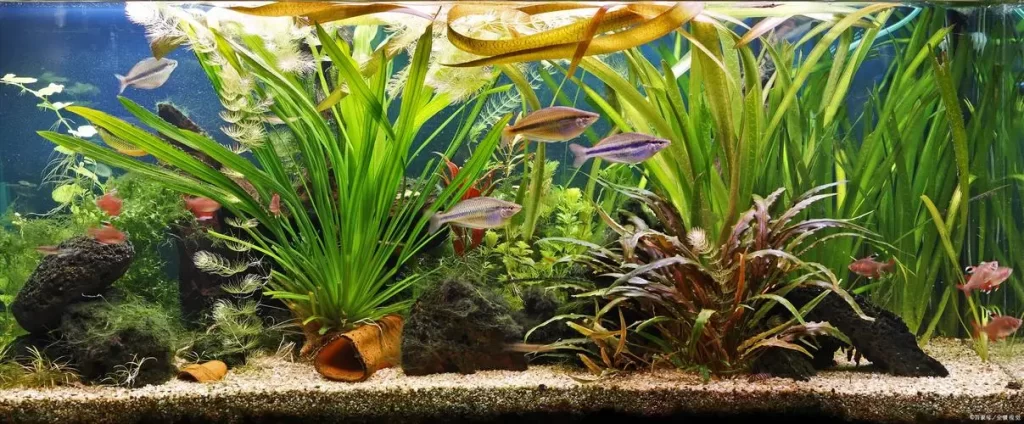
It is not difficult to keep fish well. As long as you are attentive and do the following six steps, I believe you will be able to keep your fish in good condition.
-
Contents
raise fish
Choose a good location for the aquarium
The principles are:
① Meet the requirements of indoor landscape layout. Note that it is difficult to move once placed;
② Suitable for viewing and daily management;
③ There is a power socket nearby;
④ It is best not to be backlit, otherwise the viewing effect will be poor without light. It is best to be in a place with brighter scattered light and where the sun cannot shine directly, otherwise algae will easily grow;
⑤ A relatively safe and quiet place that is not easy to be bumped;
⑥ If placed on furniture, the furniture should have sufficient bearing capacity and should not be afraid of being wetted by water;
⑦ If you raise a tropical fish aquarium, you can consider placing it close to the radiator to reduce the electricity consumption for heating in winter, but it should not be placed close to it.
If you are not buying a ready-made tank, you should also purchase filtration facilities, heating facilities, thermometers, lamps and other necessary supplies separately. If you plan to grow aquatic plants, you should also purchase bottom sand, aquatic plants, aquatic plant base fertilizer, etc. If necessary, you can also purchase a carbon dioxide supply system, driftwood and some accessories at the same time. But be careful not to rush to buy fish!
-
Setting up a water plant tank
Note: If you are raising fish in a bare tank, you can skip this section.
Determine the style of the aquarium
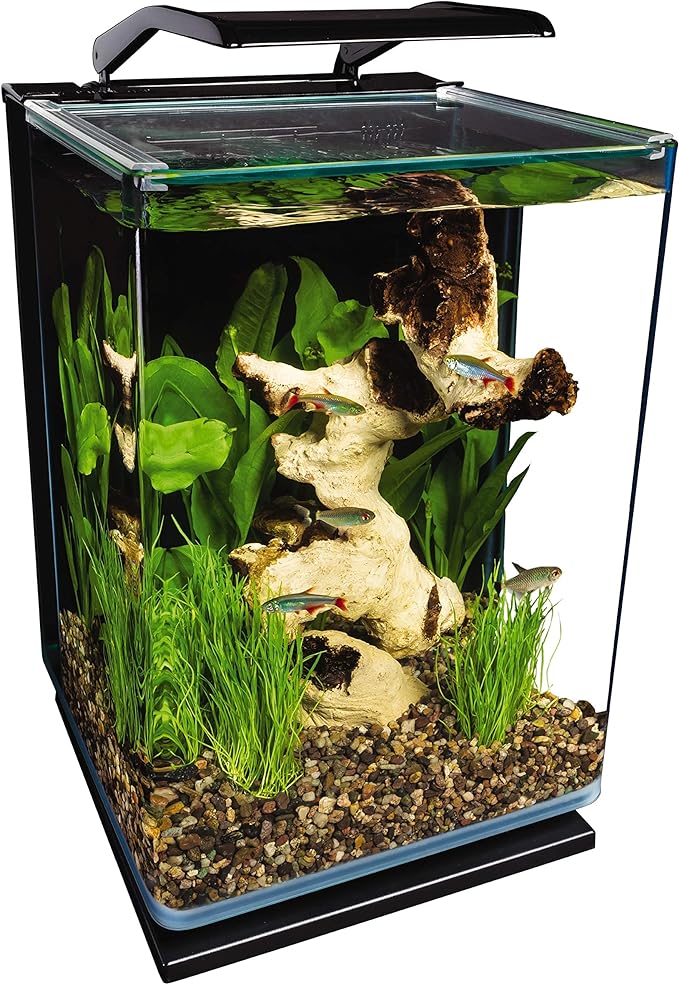
Marineland Portrait Glass LED Aquarium Kit
There are many styles of aquariums. Some are like vast grasslands, some are like rolling mountains, some are like dense forests, and some are like mysterious canyons… People in different regions have different aesthetic tastes. You can choose different styles according to your personal preferences and the layout of the room. You can learn from other people’s works when setting up a tank for the first time.
-
Set up the cylinder
① If tap water is used, it needs to be left in an open container for 1-2 days. If the fish and aquatic plants to be raised have strict requirements on water quality, it should be adjusted as required. Wash the purchased bottom sand repeatedly.Wash the tank body and other utensils to be placed in the water.
② Place the tank body in the predetermined position. If you choose a bottom heating or filtration system, install it first.
③ Take 2/3 of the bottom sand and mix it evenly with the aquatic plant base fertilizer in a large basin, put it into the bottom of the tank and spread it flat. Then take the remaining 1/3 and spread it in the tank. The total thickness of the bottom sand can be controlled at 3-6cm, slightly thinner in the front, slightly thicker in the back, slightly thinner in the middle, and slightly thicker at both ends. Place larger decorations such as rocks and sunken wood. If you don’t want to grow grass, you don’t need to add fertilizer to the bottom sand.
④Put a plate flat on the bottom sand, slowly pour the dried water on the plate and spread it around to prevent the sand from being washed away. When the water is injected to 1/3 of the tank, plant the water plants you bought. Then, fill the water. Take out the plate, arrange the water plants appropriately, place the smaller decorations, and remove the floating objects on the water surface.
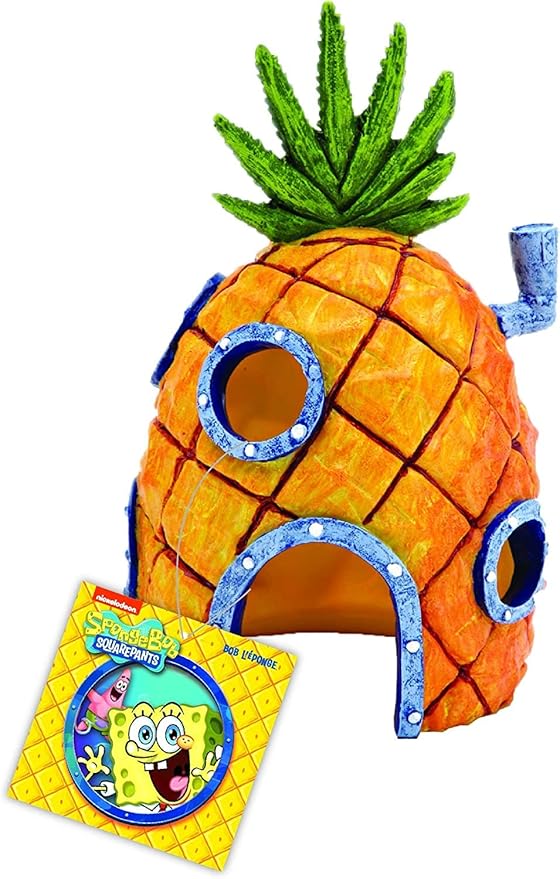
Penn-Plax – SpongeBob’s Pineapple House
⑤ Install the temperature control, filtration, lighting, gas addition and other systems. Fluorescent lamps are commonly used now. When using these lamps, it is necessary to avoid mixing multiple colors. Generally, two warm-toned fluorescent lamps, solar lamps or white lamps, are used. The length of the lamp tube is related to the power. If the aquarium can be opened, try to use longer lamp tubes. According to the width of the aquarium, place 2-5 lamp tubes. The lamp should be installed directly above or slightly in front of the aquarium. In order to improve efficiency, a reflector should be installed inside the lamp.
⑥Adjust the temperature control system to an appropriate value, turn on the gas supply and filtration system, but do not turn on the light.
⑦ Since the base fertilizer in the bottom sand is easily dissolved in water, change 1/2 of the water every day for the first two days. Then start to cultivate the water patiently.
-
Water cultivation
“To cultivate fish, you must first cultivate water” is the only way to successfully cultivate fish. The simplest way to cultivate water is to use a water cultivation machine, which can easily solve the problem!
-
Buying fish
1. Determine the fish species
Generally, before buying an aquarium, many fish lovers may have decided what fish to raise, and some even buy an aquarium just for raising a certain type of fish. If you haven’t decided yet, now is the time to consider what fish to raise. Goldfish, koi or tropical fish? It depends on your preference. I have raised all these fish, and I only have the following suggestions for you:
① If you care about electricity bills, don’t raise tropical fish. For the room temperature of an average family, it is necessary to heat the aquarium in winter;
② If you like to raise water plants, it is best to raise small tropical fish that do not eat grass, otherwise the species of water plants raised will be greatly limited. Goldfish, koi and some large tropical fish have the habit of eating plants, and large fish can often stir up water plants;
③ Koi and goldfish generally eat more than tropical fish, consume more oxygen, and have more mucus on the surface of the fish body, so they need to change water more frequently;
④ If you use water tanks, ceramic basins, pools, etc. to raise fish, it is best to raise goldfish or koi, because these two types of fish are more suitable for viewing from the top;
⑤ The breeding conditions and living habits of goldfish, koi and tropical fish are quite different, so they should not be mixed;
⑥ For water plant tanks, you should raise several fish that feed on algae, such as elves, black jasmine, moss mice, etc.;
⑦ For novices, you should start with fish that are easy to breed. The simplest criterion is price: cheap ones are often easy to breed.
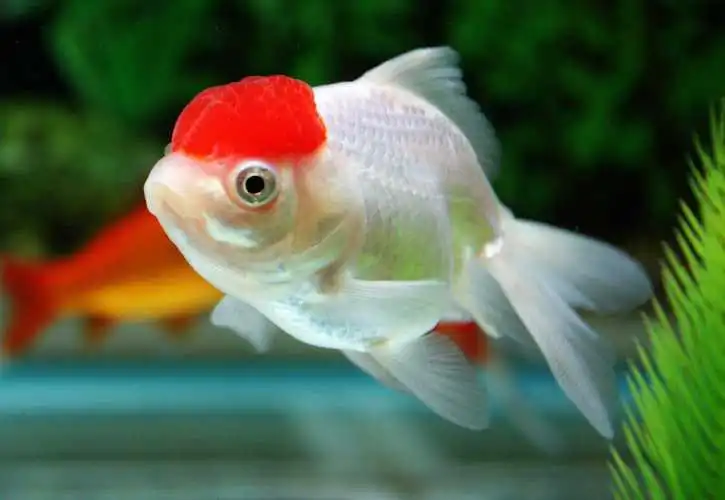
2. Principles of mixed culture
① Fish should have similar requirements for water quality, including water temperature, pH, age, hardness, and salinity;
② The size should not be too different. Pay attention to selecting fish species that are easy to mix and cannot pose a threat to each other;
③ Some large carnivorous fish such as piranhas are best raised alone, or mixed with fish of similar size and habits such as map;
④ Some more precious and timid fish such as seven-color angelfish are best raised alone;
⑤ Pay attention to the harmony of body color and body shape in mixed culture;
⑥ Different fish have different activity spaces. Pay attention to the matching of fish species at different levels;
⑦ There should not be too many mixed fish species, otherwise the aquarium will appear messy. It is best to use one type of fish as the main body and then add a small amount of other fish that will not overshadow the main fish.
3. Choosing fish
① Before buying, you must be familiar with the habits and feeding methods of the fish you want to buy. Don’t buy just because you see a beautiful fish;
② Be sure to buy healthy fish. The identification method is: first, check whether the fish’s skin is congested, scaled, has white spots and white hair, has wounds, or has damaged fins. Sometimes you need to look from the top, and it may be clearer if there is light; then see whether the fish swims easily and balanced, and whether the fins are stretched naturally; third, check whether there are dead fish or sick fish in the same tank; fourth, check whether the water color of the fish tank is normal. If the water color is abnormal, it may be that the boss is treating the fish; there is another method that people often use, which is applicable to certain species of fish: shake your palm back and forth in front of the fish tank. Healthy fish often have a strong appetite and will chase your palm;
③ Don’t buy fish with physical defects unless you think this defect will help you cultivate new varieties;
④ Don’t be too greedy for cheapness, often buying a lame donkey with cheap money. As an ornamental item, it is very uncomfortable to have flaws;
⑤ Try to buy underage fish, first, to save money, second, it is easy to adapt to the environment. If you buy old fish, they will have poor adaptability to the new environment, and what’s the point of keeping them alive for a short time? ! Of course, you can’t buy fish that are too small, first, they are weak and too difficult to feed, and second, some characteristics are not yet manifested, and it is difficult to say whether they can grow into fish that meet the requirements in the future;
⑥ It is best to choose from a large batch of fish, first, there is a lot of room for selection, second, the price is cheap, and third, it is not easy to buy residual fish or discarded fish;
⑦ It is best not to buy fish that have just arrived locally, because you don’t know whether it can adapt to the local water quality or whether it is sick. It is better to let it grow in the aquarium store for a week before buying.
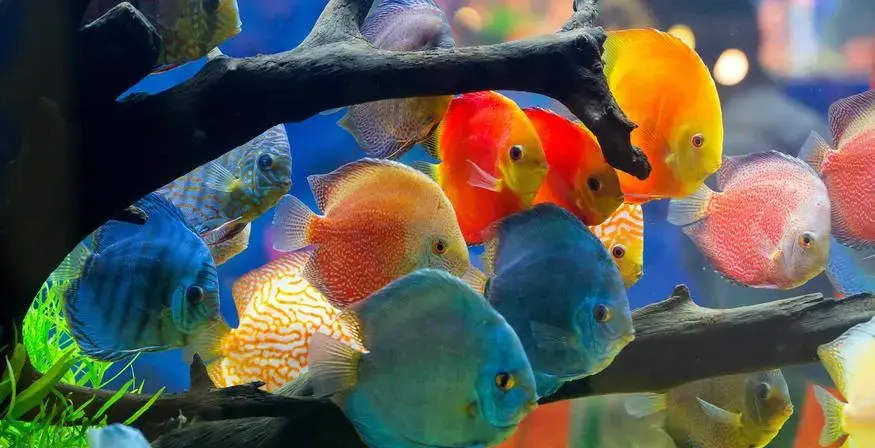
-
Fish in the tank
1. “Hanging fish” or “pouring water”
“Pouring water” may be more gentle. This method is recommended for fish with high water quality requirements: gently pour the water and fish in the plastic bag into an open container,slowly add water from the tank to the container, and let it stand for 5 minutes when it accounts for about 1/5 of the original water volume, then pour out 1/5 of the water in the container, then add 1/4 of the water from the tank, and let it stand again… The amount of water poured in and out can be appropriately increased each time. After repeating this 7-8 times, the water quality of the two is basically the same. Then put the container into the tank and let the fish get out of the container by themselves, and you’re done! Note that if it is winter, it is best to let the container float in the tank during the standing process to ensure that the temperature gradually approaches, because if the room temperature is low, 5 minutes is enough to cool the water.
2. Isolation breeding
It is best not to put the newly bought fish directly into the breeding tank, but to put it in an isolation container for a period of time. Otherwise, once the fish disease is brought in, it may cause the whole army to be wiped out, and it will be too late to regret it!
Glass tanks are preferred for isolation containers, which are easy to observe. The isolation breeding time cannot be less than 1 week. During this period, pay attention to observation and deal with the disease in time. Make sure there is no disease before moving it into the breeding tank for normal breeding.
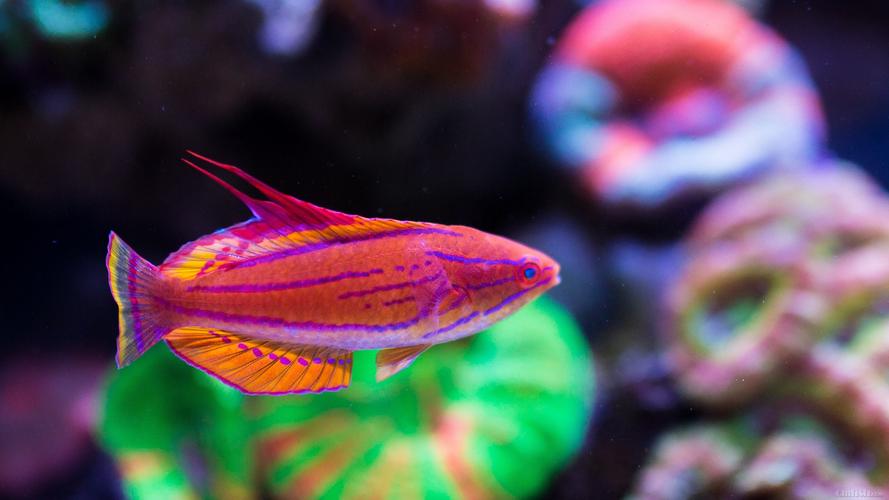
-
Enter the daily management procedure
1. Feeding
After the fish are placed in the breeding container, the most basic work every day is feeding. If you feed too much, there will be a lot of leftover bait, a lot of fish feces, and the water quality will be turbid. If you feed too little, the fish will not be full. The number of times you feed and the amount of each time should be controlled according to the specific situation.
No matter how many times a day you feed, just like people’s three meals, you should have a fixed time and quantity. If you feed once a day, the time can be selected at 8-9 am; if you feed twice a day, the time can be selected at 7-8 am and 3-4 pm; if you feed three times a day, the time can be selected at 7-8 am, noon, and 5-6 pm. Of course, these times are for reference only. Nowadays, people are busy at work, so you can feed before or after get off work. Just pay attention to regularity and don’t feed randomly. Because fish will sleep after turning off the lights, it is best not to feed at night, otherwise it is easy to cause indigestion. If you forget to feed the fish for something, you can feed it normally at the next meal. Generally, if the fish starve for a few days, there will be no major problems.
2. Draining and changing water
For aquatic plant tanks, water can be changed 1-2 times a week, and a special suction pipe can also be used to suck out some dirt in the sand. The amount of water changed each week should be controlled at about 1/3 of the total water volume. For different water quality conditions and different fish, the number and amount of water changes should also be different. For example, bare tanks with high fish density, small volume, and turbid water may need to be filtered day and night and change more water every day. For example, betta fish have low activity and like old water, so the number and amount of water changes should be reduced. When changing water, pay attention to the temperature difference of the water should be controlled within 4℃. For fish that are sensitive to water temperature, the temperature difference should be controlled within a smaller range.
3. Lighting
If you raise fish in a bare tank, the lighting requirements are generally low. Although light has a certain effect on the body color and physique of some fish, it is often based on natural lighting or supplemented with a small amount of lighting. It can even be said that most of the lights on the bare tank are set up just for good viewing effect, without considering the needs of fish growth. But for the water plant tank, unless there is strong scattered light in the room, turning on the lights on time is necessary for the photosynthesis of water plants. Generally, the lights should be turned on for 8-12 hours a day, and the lighting time should be fixed. If the time is too short, the water plants will not get enough light, and if the time is too long, algae will easily grow. Different water plants also have different requirements for light. Light is to water plants like food is to fish, and it must not be arbitrary.
4. Aeration
When there is a lack of oxygen in the water, the fish float to the surface and do not return to the water, commonly known as “floating head“. The surface water comes into contact with the air, and some oxygen can be dissolved from the air, so the dissolved oxygen on the surface is more than that in the lower layer of water. When this happens, the aerator should be turned on immediately, or the oxygen can be increased by replacing new water. If measures are not taken in time to increase the oxygen in the water, and the fish are allowed to float, it will not take long before the fish suffocates and dies, commonly known as “stifling tank”.
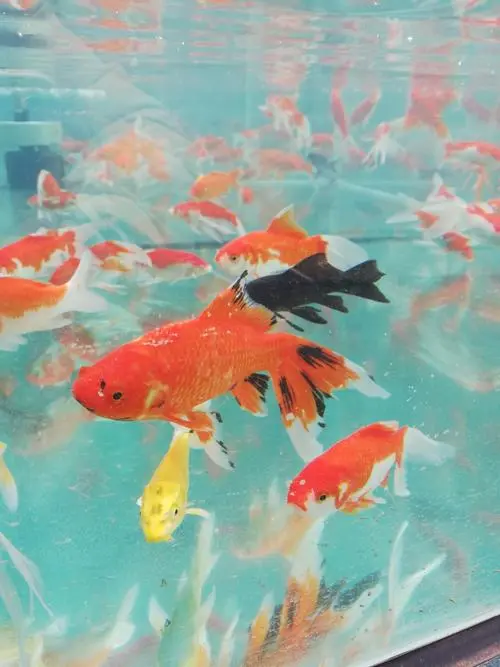
The photosynthesis of water plants emits oxygen, but they need to inhale carbon dioxide. If there is a lack of carbon dioxide, although the water plants will not “float”, they cannot grow normally. Therefore, if there are many water plants in the tank, especially some fast-growing or high-end water plants, it is also necessary to add carbon dioxide.

